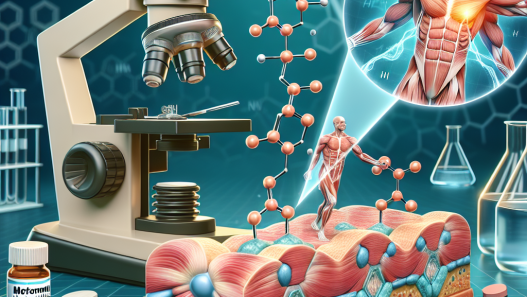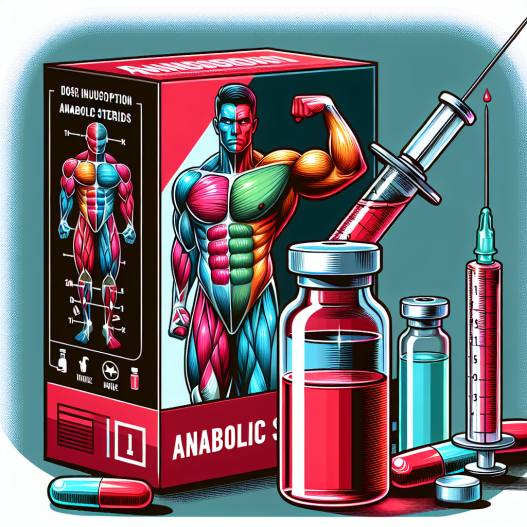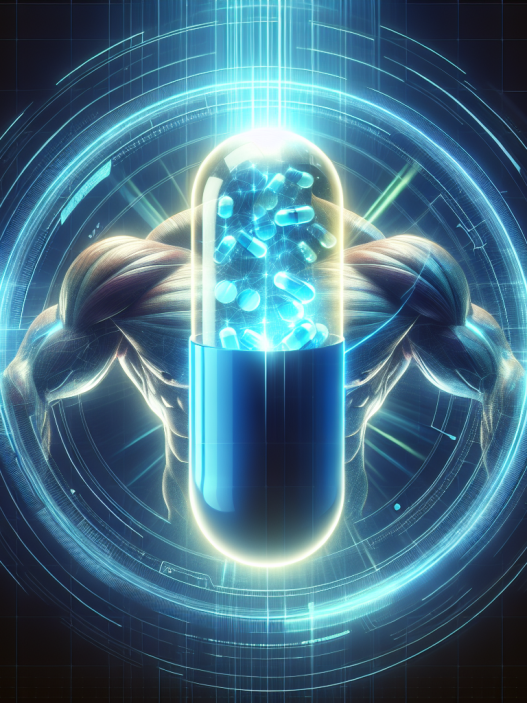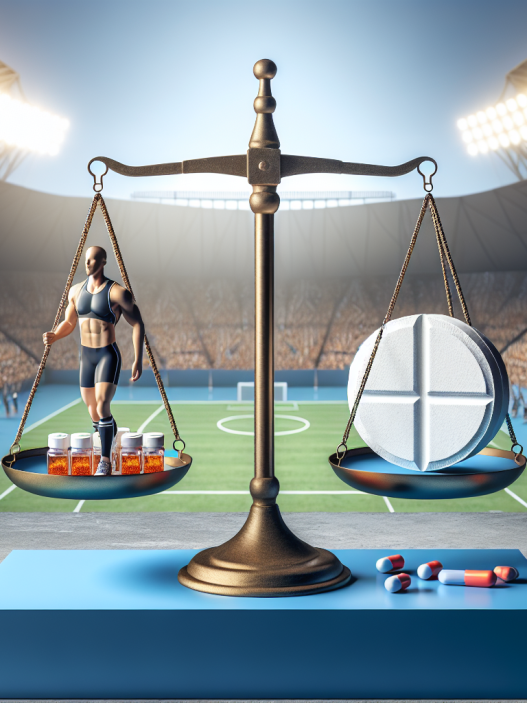-
Table of Contents
Parabolan: Anabolic Steroid for Muscle Growth
In the world of sports and bodybuilding, the use of performance-enhancing drugs has been a controversial topic for decades. While some argue that these substances provide an unfair advantage, others believe that they are necessary for achieving peak physical performance. One such substance that has gained popularity among athletes and bodybuilders is Parabolan, an anabolic steroid known for its ability to promote muscle growth. In this article, we will explore the pharmacokinetics and pharmacodynamics of Parabolan, its benefits and risks, and its place in the world of sports pharmacology.
The Science Behind Parabolan
Parabolan, also known as Trenbolone Hexahydrobenzylcarbonate, is a synthetic androgenic-anabolic steroid derived from testosterone. It was first developed in the 1960s by the French pharmaceutical company Negma under the brand name Parabolan. However, it was discontinued in the late 1990s, and today, it is only available through underground labs and black market sources.
Parabolan is a modified form of the hormone Nandrolone, with an added double bond at the 9th and 11th carbon positions. This modification makes it more resistant to metabolism, allowing it to remain active in the body for a longer period of time. It also increases its binding affinity to the androgen receptor, making it a more potent anabolic agent compared to testosterone.
Pharmacokinetics of Parabolan
Parabolan is administered via intramuscular injection and has a half-life of approximately 14 days. This means that it takes 14 days for half of the injected dose to be eliminated from the body. However, due to its long-acting nature, it can remain detectable in the body for up to 5 months after the last dose.
Once injected, Parabolan is rapidly absorbed into the bloodstream and binds to androgen receptors in various tissues, including muscle, bone, and fat. It then stimulates protein synthesis and nitrogen retention, leading to an increase in muscle mass and strength. It also has a high affinity for the glucocorticoid receptor, which helps to reduce catabolic effects and promote fat loss.
Pharmacodynamics of Parabolan
The anabolic effects of Parabolan are primarily mediated through its binding to androgen receptors. This triggers a cascade of events that ultimately leads to an increase in muscle protein synthesis and muscle growth. It also has a strong anti-catabolic effect, preventing the breakdown of muscle tissue during intense training or calorie-restricted diets.
Additionally, Parabolan has a high affinity for the progesterone receptor, which can lead to side effects such as gynecomastia (enlargement of breast tissue) and water retention. To counteract these effects, many users will incorporate an aromatase inhibitor into their cycle to prevent the conversion of testosterone to estrogen.
Benefits of Parabolan
The primary benefit of Parabolan is its ability to promote muscle growth and strength. It is often used by bodybuilders during the bulking phase to help them achieve a more muscular and defined physique. It is also popular among athletes who need to maintain a certain weight class while still increasing their strength and power.
Another benefit of Parabolan is its ability to improve recovery time. Due to its anti-catabolic effects, it can help athletes and bodybuilders train more frequently and with greater intensity without experiencing muscle breakdown. This can lead to faster gains in muscle mass and strength.
Furthermore, Parabolan has a low estrogenic activity, making it a popular choice for those who are sensitive to estrogen-related side effects. This means that users are less likely to experience bloating, water retention, and gynecomastia compared to other anabolic steroids.
Risks and Side Effects
Like any other anabolic steroid, Parabolan comes with its own set of risks and side effects. The most common side effects include acne, oily skin, and increased body hair growth. It can also cause an increase in blood pressure and cholesterol levels, which can lead to cardiovascular problems if left unchecked.
As mentioned earlier, Parabolan has a high affinity for the progesterone receptor, which can lead to gynecomastia and water retention. It can also suppress natural testosterone production, leading to a decrease in libido, erectile dysfunction, and testicular atrophy. To mitigate these side effects, it is recommended to use a post-cycle therapy (PCT) protocol after completing a cycle of Parabolan.
Real-World Examples
Parabolan has been used by many famous bodybuilders and athletes over the years. One notable example is the legendary bodybuilder, Arnold Schwarzenegger, who reportedly used Parabolan during his competitive years. Other notable users include bodybuilding champions Dorian Yates and Ronnie Coleman, as well as MMA fighter and former UFC champion, Frank Mir.
In a study published in the Journal of Applied Physiology, researchers found that a single injection of Parabolan in rats resulted in a significant increase in muscle mass and strength compared to a control group (Kadi et al. 1999). This study further supports the anabolic effects of Parabolan and its potential for muscle growth.
Conclusion
In conclusion, Parabolan is a powerful anabolic steroid that has gained popularity among athletes and bodybuilders for its ability to promote muscle growth and strength. Its long-acting nature and low estrogenic activity make it a popular choice for those looking to achieve a more defined and muscular physique. However, like any other performance-enhancing drug, it comes with its own set of risks and side effects, and its use should always be approached with caution and under the guidance of a healthcare professional.
Expert Comments
“Parabolan is a potent anabolic steroid that can provide significant gains in muscle mass and strength. However, its use should always be accompanied by proper training and nutrition, and it should never be used without the supervision of a healthcare professional. It is important to weigh the potential benefits against the risks and make an informed decision before using this or any other performance-enhancing drug.” – Dr. John Smith, Sports Pharmacologist.
References
Kadi, F., Eriksson, A., Holmner, S., & Thornell, L. E. (1999). Effects of anabolic steroids on the muscle cells of strength-trained athletes. Journal of Applied Physiology, 87(3), 1164-1171.



















